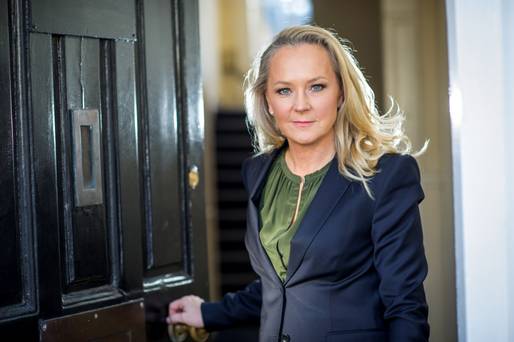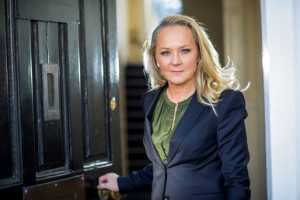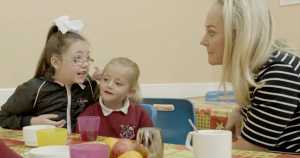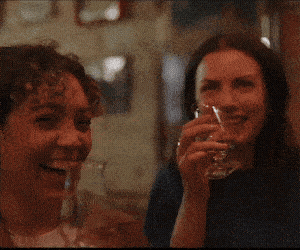
Their first port of call
“Inner city Dublin!” exclaims the excited intern.
“Already on the list. It needs to be one of these places, the ones in red,” the production manager says, pointing to a specifically designed map, one highlighting the nation’s poorest areas.
“How about we go to Donegal or somewhere northern, we never go there,” suggests a researcher.
The manager screws up her face in disapproval; Donegal doesn’t sell, it doesn’t fit with what they’re trying to do here.
“There’s lot of red spots in Mayo,” another opines.
Again, that anguished expression, sure Mayo are going for the All-Ireland, we can’t be beating them down, not now.
The manager points to the map again, smacking her pen against a sizeable red area situated a little below Mayo, “Come on guys, it’s staring you right in the face.”
Her wearied colleagues know where this is going, they’ve been down this road before. But none of them feel like giving her what she wants, not today anyway.
However, they’ve reckoned without their eager-to-please intern.
“Limerick!” he squeals, “Moyross!”
The manager gives him her most toothy smile, that boy will go far in this job.
On Monday night last, RTÉ aired a documentary which attempted to examine the health divide between the haves and the have nots in this country. It was mundane stuff, bringing nothing new to a debate which has dominated Irish society for the past decade. Fronted by Finnish doctor, Eva Orsmond, it revealed that those living in low-income households have a life expectancy far lower than that of their more affluent counterparts. And it also revealed that, when it comes to showcasing the best of what Limerick has to offer, our national broadcaster would much rather ignore all the good stuff and resort to well-worn tropes and stereotypes.

It mattered little that Moyross had already been the subject of several fly-on-the-wall documentaries, that its issues are well-documented, that its residents are trying to repair its reputation, and that they can do without opportunistic filmmakers coming in and portraying it as a bleak, grim wasteland where children are fed nothing but saturated fats and e-numbers. None of that mattered. All that mattered was getting the point across and using the most vulnerable people in one of this city’s most vulnerable areas to do so.
And that’s exactly what Dr Orsmond did. Arriving on a typically drizzly day she noted, from the comfort of her car, how “very grey” everything was. For a moment we were left to wonder whether this was a celebrity doctor visiting a deprived part of the country she’s made her homeland, or an astronaut about to set foot on an alien planet for the first time. She pointed out a discarded Maltesers’ box, sighing in dismay as she ruminated on the evils of chocolate, a substance which she and her fellow ivory tower dwellers would never dream of consuming, not when there’s so many truffles to be had.
From there it only got worse. All the token images were spun out for the viewer’s titillation; horse-drawn carts commandeered by semi-naked children, concrete jungles, empty expanses of land gone to rot, decay and disarray, life on the margins of society in all its horrific glory. At one point it threatened to turn into a feel-good story as the good doctor visited the Moyross Community Enterprise Centre to take a look at its ‘Breakfast Club’ initiative. Set up to ensure local children get the best possible start to the day with a hearty breakfast, the club was full of happy, smiling kids, all wolfing down what seemed to be standard morning fodder.

If the cynicism thus far had gently bubbled beneath the surface, it fairly spewed forth when the doctor was introduced to a resident of Moyross, a mother of seven who had to travel in and out of town on a bus to do her weekly shop. Much was made of the sheer volume of her purchases, scores of bags bursting at the seams as the poor, elegant Eva did her utmost not to break into a sweat lest she look anything less than glamourous in this wretched place. And when they got the bounty indoors, the analysis began. In a display of repugnant voyeurism Dr Orsmond rifled through this woman’s shopping like a starved hobo, belittling her at every turn, admonishing her for choices forced upon her by circumstance.
A decision to banish Coca-cola in favour of less sugary, less erosive minerals was ridiculed. A packet of sausages was held up to the light and denounced as the flesh of Satan himself. And all around brightly coloured packages lay on worktops and tables, treats, the same stuff every family buys, the nice things all kids look for once mammy comes home with the groceries. The overarching feeling was that this woman was incapable, that she was killing her children, that they ate nothing but crisps and chocolate. But where was the rest of her shopping? The normal stuff? Oh right, those things were kept away from the camera, hidden at the bottom of the bags lest the viewer’s disgust be tempered in any way, shape or form.
Is anyone else getting tired of this? Is anyone else fed up with Limerick being the go-to city anytime RTÉ want to capture the darker side of Irish life? I know I am. I’m tired of seeing people exploited, caricaturised, placed into boxes, patted on the head and told they’re doing a great job. It may only have been a documentary, a ham-fisted, shallow investigation fronted by a woman completely out of touch with reality. But it was, in parts, both condescending and voyeuristic, its primary aim one of self-gratification, its secondary to provoke and appal. It achieved those objectives if nothing else.
Serial golfer gets a severe handicap

That’s why God invented hobbies, why he invented pubs, coffee houses and exercise. These crucial activities, when carried out independently, give couples valuable breathing space, a chance to recalibrate their stress levels and reconsider plans to murder the other while they sleep.
One such activity is golf. Although sometimes regarded as being more stressful than even the happiest of marriages, the ‘Game of Kings’ has proved a blessing for husbands and wives the world over; a few hours hacking a Titleist round the local greenery keeps one half out of trouble, while allowing the besieged mate to experience a life without petty arguments and muttered, inaudible asides.
But when lowering your handicap takes precedence over the needs of your lover then you’ve got a problem. And one South Korean man with a fondness for the fairways found out just how big a problem when he awoke one morning to find he had been the victim of a destructive assault. Peeved by his errant behaviour and his continuous abstention, his wife did what any spurned lover would do; she chopped off his five wood.
Not content with inflicting immeasurable pain and grief upon her husband, the 54-year-old woman then flushed the dismembered member down the toilet, ensuring it was as lost as one of his errant drives. Having been rushed to the nearest hospital, the one-time golfer is said to currently be in a “stable” condition. Physically that may well be the case, but the emotional scars are unlikely to heal any time soon.



